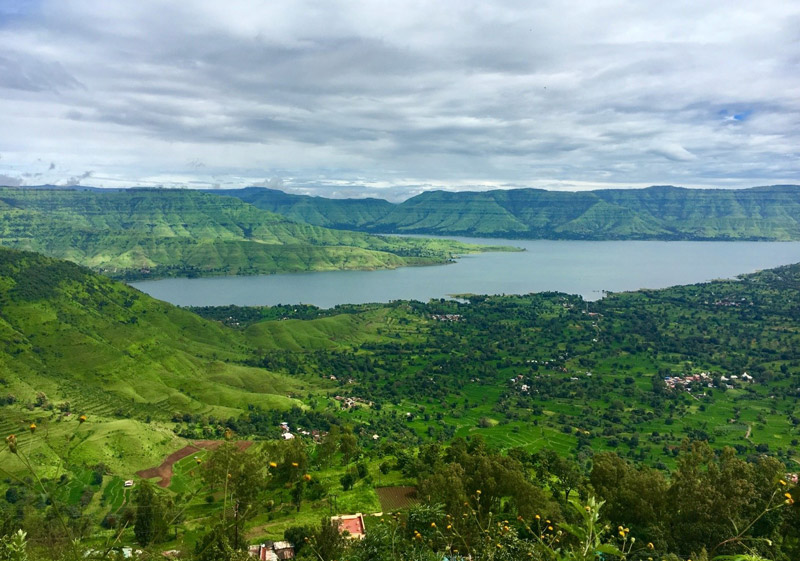4 mins 17th January 2020
Mahabaleshwar was once the summer capital of the Mumbai Presidency and it’s easy to see why. Sitting at a height of 4,439 feet above sea level and only 270 km from Mumbai, it is a perfect weekend retreat. But it is also a popular weekend
getaway, given its natural waterfalls and the lush greenery that envelopes the hills, especially during rains. The hill station is also frequented by hikers during monsoon for its picturesque views of lakes, rivers and valleys.
While planning a trip to Mahabaleshwar, check out the deals and offers available on Axis Bank’s credit and debit cards for discounts and benefits on travel, accommodation & more with new offers every
Wednesday! And while you plan your itinerary, you can acquaint yourself with the stories that make Mahabaleshwar a town of great history.

The recorded history of Mahabaleshwar goes back to 1215 CE, when Yadava King Singham of Devagiri visited this place. He is believed to have built a temple as well as a small tank at the source of the Krishna River. After the fall of the Yadava
dynasty, the region was ruled by a succession of kingdoms, mainly the Sultanates of Bijapur and Ahmednagar.
The Nizam Shahs of Ahmednagar appointed a local family of Shirkes as caretakers and they enjoyed great power. But when things soured between them, the Nizam Shah was quick to replace the Shirkes with another local Maratha family, the Mores. Over
time, the family were granted the title of Rajas of Jaoli and Mahabaleshwar. They are said to have ruled for 7 generations.
Mahabaleshwar was subsequently tossed between kingdoms as power equations constantly changed, from the Peshwas to the Rajas of Satara. But in the 19th century, Mahabaleshwar received a fresh lease of life.
It is believed that the first European to set foot on the hills of Mahabaleshwar was General P Lodwick, who had heard about its ‘boundless beauty’. He explored the region in the summer of 1824 and it was he who made Mahabaleshwar popular
among the British.
A year later, Mahabaleshwar received another prominent visitor, the Resident of Satara, Colonel Briggs. He recognised the potential of Mahabaleshwar as home to a sanatorium for European invalids. His report on its virtues to the Medical Board
of Bombay persuaded the Governor of Bombay, Sir John Malcolm, to visit the hill station in May 1828. He was welcomed with a grand reception by the Raja of Satara and they agreed to develop Mahabaleshwar.
Sir Malcolm became so attached to the place that he even got the Raja of Satara to exchange the town for the village of Khandala, also in Satara district. Considering Malcolm’s great personal interest, the Raja agreed. He also constituted
Mahabaleshwar into a separate pettah (a small taluka). The Governor expressed his wish to name the new village after the Raja, but the latter insisted on naming it after Malcolm instead! Thus, an entire area in Mahabaleshwar came to be called
Malcolm Peth, a name that has stuck till today.
In 1829, Mahabaleshwar was officially declared as Bombay Presidency’s summer capital. Grants were issued for the construction of public buildings and the next decade was one of prosperity for Malcolm Peth, thanks largely to the visionary
colonial administrator, Sir Bartle Frere, who was later appointed Governor of Bombay. It was Frere who attracted the likes of Bombay’s leading men Dr Bhau Daji, Sir Jamsetjee Jeejeebhoy, Cowasji Jahangir, David Sassoon, etc., to visit
Mahabaleshwar. Eventually, most of them, prosperous from the cotton export trade, bought properties here.
Reminders of Mahabaleshwar’s rich colonial past are still visible in its temples and bungalows - some ruined and some preserved - which dot the hill station. And it continues to lure tourists with its magnificent waterfalls and forests just
as it did 200 years ago.
Disclaimer: This article has been authored by Live History India Digital, a Mumbai based Digital Content Company. Axis Bank doesn’t influence any views of the author in any way. Axis Bank and Live History India Digital shall not be responsible for any direct/indirect loss or liability incurred by the reader for taking any financial decisions based on the contents and information. Please consult your financial advisor before making any financial decision.








